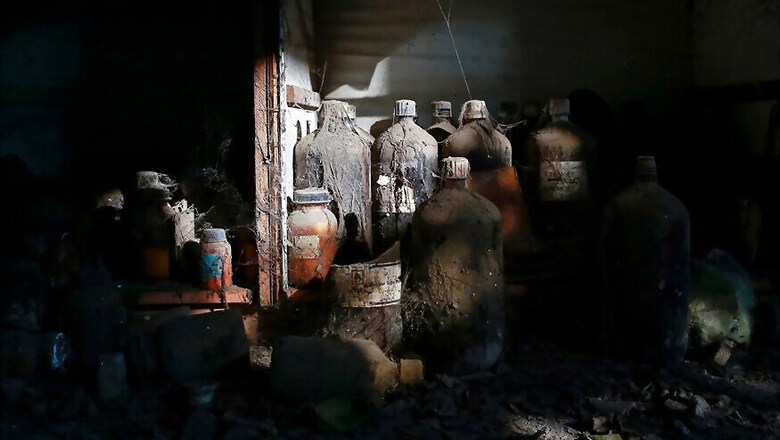
views
Bhopal: People running around disoriented, some trying to help family members, many collapsing on pavements and roads. As images of hundreds of locals frantically attempting to escape a styrene gas leak in Visakhapatnam flooded television and digital media on Thursday, they brought back chilling memories of similar scenes from the night of December 2-3, 1984 in Bhopal where thousands died and lakhs were injured within hours of being exposed to a methyl isocyanate (MiC) outburst from a Union Carbide pesticide plant.
Authorities said 11 people died and 1,000 were exposed to the gas leaked from an LG Polymers unit in Visakhapatnam.
Rachna Dhingra, from Bhopal Group for Information and Action, who is fighting for social and legal justice of the 1984 tragedy victims told News18 that scenes from Thursday's incident were reminiscent of those from 36 years ago. “The cause also seems the same—compromised safety systems at industrial units. Like the case was with Union Carbide, it’s again vindicated that corporates could kill with ease, defying laws,” said Dhingra, hinting at UC dodging criminal liability of the 1984 incident.
Close 3,800 people were killed and over 5,70,000 injured in the Bhopal disaster, according to government data, though unofficial figures are far higher.
Most residents were fast asleep during both incidents, as the leak in Bhopal occurred around midnight and the one in Visakhapatnam took place close to 2.30am.
Such units using hazardous chemicals should be at distance from habitation, use alarms and adhere to all safety parameters, which were allegedly violated by the company in Visakhapatnam, added Dhingra, maintaining that similar things had happened in Bhopal.
Former scientist at Madhya Pradesh Pollution Control Board (MPPCB) Gunwant Joshi said styrene is much less toxic than MiC. “Unless in high concentration and exposed in close confinement, styrene can’t be fatal,” he said.
Following the Bhopal tragedy, safety norms, requirement of protective equipment while dealing with hazardous chemicals and audits by industry departments have come into force across the country, and unless there is a failure of equipment or human error, industrial disasters are unlikely, the scientist said.
After the 1984 incident, the Environment Protection Act was implemented to regulate industrial activities, disaster management rules were formulated. Eventually the National Disaster Management Authority (NDMA) was established through a legislation in 2005, which is also helping in the fight against the novel coronavirus pandemic, said Joshi.
“Hazardous chemical use has a certain protocol to be followed which was also there at UC but wasn’t adhered to due to lack of statutory guidelines then,” he added.
Gautam Kothari, president of Pithampur Industries Association in Madhya Pradesh, told News18 that while environment and disaster management laws were introduced post the 1984 tragedy, several companies in connivance with government officials tweak these regulations, leading to mishaps.
"Since 1992-93, I have been backing self-certification for industrial safety norms so that the unit concerned could be held responsible for mishaps and punished with stringent norms," added Kothari.
The 1984 gas leak was attributed to maintenance failure. Investigators suspect a similar cause in Visakhapatnam, according to reports. Though less toxic than MiC, styrene affects the central nervous system, throat, skin, eyes and other parts of the body. Most of these symptoms were found in the 1984 victims.
Madhya Pradesh has an industrial health and safety department that regulates functioning of industries and also carries out safety audits. An emergency response unit has also been started by the MPPCB which offers technical expertise in cases of industrial disasters.
Among key initiatives post the 1984 incident in Bhopal, an institute was established in the city which offers training and awareness programmes in disaster management and related subjects for officials and executives of government departments, public and private sector undertakings and others, in a bid to make them aware of the potential hazards, ways to control them and equip them to conceive and prepare emergency plans and execute them effectively in case of crises arising due to natural disasters or disasters caused as a result of human activities.


















Comments
0 comment